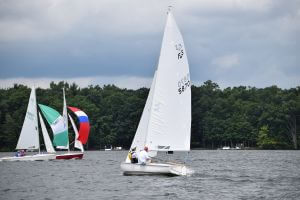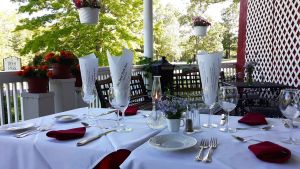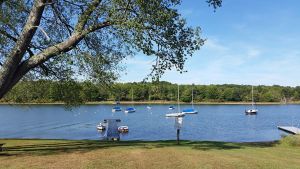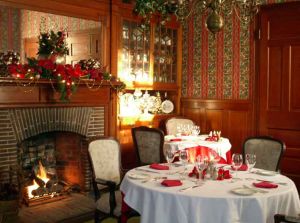Attractions, Dining & Shopping
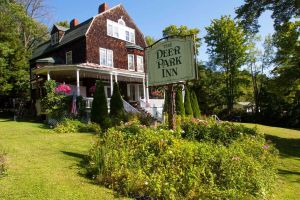
The town of Deer Park is home to The Deer Park Inn, which offers elegant dining and guest accommodations in the Pennington Cottage, a Victorian Mansion listed on the National Register of Historic Places. Visit for dinner by French-born Chef Pascal or enjoy an overnight stay.
The town also serves as the home base for Flying Scot, Inc., who has manufactured nationally recognized sailboats for over 60 years. Flying Scot is the builder of the 19 ft Flying Scot sailboat an American favorite racer/cruiser. Continuously in production in Garrett County for over 60 years, the Flying Scot is a nationally recognized One Design.
 Deer Park also hosts two barn quilts on the Garrett County Barn Quilt Trail which runs throughout Garrett County. View stop #4 Turkey Tracks Barn Quilt on the Barn Quilt Trail at 2515 Boiling Springs Road in Deer Park. The second quilt is stop #29 Bear Paw Barn Quilt located at 500 Main St in Deer Park. View the entire Barn Quilt Trail.
Deer Park also hosts two barn quilts on the Garrett County Barn Quilt Trail which runs throughout Garrett County. View stop #4 Turkey Tracks Barn Quilt on the Barn Quilt Trail at 2515 Boiling Springs Road in Deer Park. The second quilt is stop #29 Bear Paw Barn Quilt located at 500 Main St in Deer Park. View the entire Barn Quilt Trail.
Deer Park is also famous for being the original home and namesake of Deer Park Water.
History
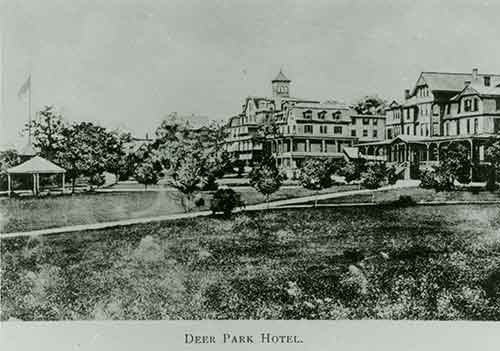 The town of Deer Park is also famous for being the original home and namesake of Deer Park Water, one of the oldest bottled water companies in America. Water from the spring, which gushes forth 150,000 gallons a day, has been bottled and sold as Deer Park spring water since 1873. Today, water marketed under the Deer Park brand is also drawn from Pennsylvania mountain springs.The Deer Park spring and the bottling operation were once owned by the Baltimore & Ohio Railroad. Bottles of Deer Park were served proudly in the dining cars. The original spring, which is not open to the public, was bought in 1993 by the Perrier Group of America. It now belongs to Nestle.
The town of Deer Park is also famous for being the original home and namesake of Deer Park Water, one of the oldest bottled water companies in America. Water from the spring, which gushes forth 150,000 gallons a day, has been bottled and sold as Deer Park spring water since 1873. Today, water marketed under the Deer Park brand is also drawn from Pennsylvania mountain springs.The Deer Park spring and the bottling operation were once owned by the Baltimore & Ohio Railroad. Bottles of Deer Park were served proudly in the dining cars. The original spring, which is not open to the public, was bought in 1993 by the Perrier Group of America. It now belongs to Nestle.
During the 1800s, this small town east of Oakland was a favorite resort for the wealthy and famous in teh Baltimore-Washington area. Just after the Civil War, the B&O railroad purchased several hundred acres of land about 200 miles west of Baltimore and built a four-story, Alpine-style luxury inn. The Deer Park Hotel opened on July 4, 1873. In the late 19th and early 20th centuries, people high-tailed it there by train and horse in the summer to what was once one of the fanciest resorts in the country. As its popularity grew, so did its size. Eventually there were 200 rooms and 10 cottages. Capacious suites offered baths and newfangled electric lights. Open from late June through September, the hotel offered bowling, billiards, a golf course, dinner dances, tennis, baseball, archery, trap shooting and more. A glass-roofed natatorium, featuring two huge indoor swimming pools, was built in 1887.
Sen. Henry Gassaway Davis of West Virginia, who built a cottage in Deer Park in the late 1860s, saw an entrepreneurial opportunity and constructed a handful of rental cottages on the hotel grounds. He sold those to the railroad, which built five more cottages on a nearby hill. One of the cottages was rented every summer by the multi-term mayor of Baltimore, Ferdinand C. Latrobe. Another was reserved by a wealthy St. Louis merchant who had Deer Park water shipped to his Missouri home year round. President Grover Cleveland and his new bride, Frances Folsom, honeymooned in another of the cottages after their White House wedding in June 1886. Col. Charles H. Heyl of Washington bought a cottage in 1906. It was sold in 1927 to an order of Washington nuns, who stayed in the house each summer and sewed altar cloths and vestments. Next door, Col. Addison A. Hosmer built a summer place.
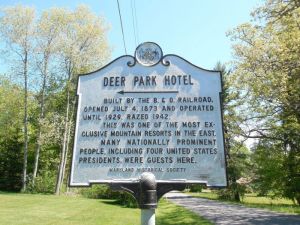 In the early 1890s, more wealthy people, including architect Josias Pennington, erected vast summer homes, rubbing elbows with the luminaries who stayed in the hotel and the cottages: Gov. William McKinley, who went on to become president; Chinese statesman Li Hung Chang; William Jennings Bryant; Rep. Edward Crump of Tennessee; and Capt. Adrian C. Anson and his Chicago baseball team, the White Stockings, which eventually became the Chicago Cubs.
In the early 1890s, more wealthy people, including architect Josias Pennington, erected vast summer homes, rubbing elbows with the luminaries who stayed in the hotel and the cottages: Gov. William McKinley, who went on to become president; Chinese statesman Li Hung Chang; William Jennings Bryant; Rep. Edward Crump of Tennessee; and Capt. Adrian C. Anson and his Chicago baseball team, the White Stockings, which eventually became the Chicago Cubs.
As the automobile gained momentum and train travel waned in popularity, Deer Park began to lose its luster. The stock market crash of 1929 helped which led to the hotel ceasing operations that year. While the hotel was razed in 1942, a marker commemorates its former site.


